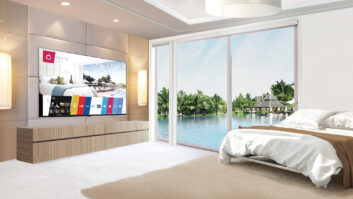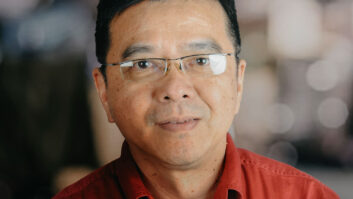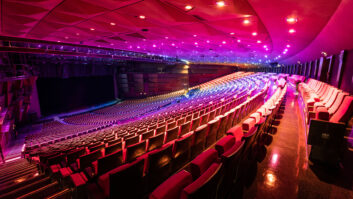InfoComm International has issued its draft standard on Audiovisual Systems Energy Management for public review and comment. The standard addresses the management of power consumption within AV systems. While it does not contain any specific requirement for energy reduction in systems, the standard requires designers to prepare an energy management plan that will help users to formulate their energy reduction goals. Joseph Bocchiaro III (pictured), vice president of standards and industry innovations at InfoComm International, told Installation Europe: “Because it’s a management standard, it’s very much about evaluating a goal. It doesn’t say: ‘Ye shall reduce energy consumption by 80%.’ It says: ‘Ye shall evaluate your system, and manage when devices go on and off and into standby.’” The basic principle should be, “If you’re not using it, turn it off,” he said. However, in AV systems it’s not that simple. “For instance, with videoconferencing, what equipment needs to be on, and what can be off? And if it switches into audio conferencing mode, what then?” Bocchiaro is keen to stress that it is not the intention of the standard, which will be voluntary, to be prescriptive. “We want to allow the designer to retain creativity.” However, it requires system designers “to think about each device and how to control power to it – and monitor overall power consumption,” he said. The main tool within the standard is an energy management tool – a downloadable spreadsheet that “walks you through the thought process,” he explained. “First, do your design the way you normally would. Then, list each device in the table and how much power they use. Next, think about the different modes in which the room operates, and think about what needs to be on or off within each mode.” This requires the designer to “think about what needs to be plugged in where” and complete a power management drawing. “A lot of companies do power management drawings anyway, but not everyone. Now, under this standard, you have to – but it doesn’t say what it should look like.” Bocchario added that one intention of the standard is to change the behaviour of end users. “One of the requirements of the standard is to have a plan to explain to the client how their system operates. For instance, it may go into standby when you leave the room because of occupancy sensors. Or it may be programmed to shut down at 18:00 hours. It doesn’t have to be that complicated, but users need to be educated. You don’t want them to override the system – we’re only going to save energy with the standard if systems are used in the way they were designed.” A longer-term aim is to provoke a change in how equipment manufacturers address the issue of standby. “Some devices in standby are completely on – the light just changes colour. At the other extreme, others are drawing just enough power that they can turn on again at an infrared signal. As AV-IT convergence continues, and more devices become IT-enabled, there’s a desire for devices to draw a minimal amount of power so they can come on again from a network command.” The draft standard on Audiovisual Systems Energy Management is available for comment on the InfoComm website until 4 June. It is hoped that, provided no significant changes arise from the public comment stage, the final version of the standard will be ready in time for the InfoComm show in Las Vegas. www.infocomm.org/standards
InfoComm publishes draft energy management standard
InfoComm International has issued its draft standard on Audiovisual Systems Energy Management for public review and comment. The standard requires AV system designers to prepare an energy management plan that will help users to formulate their energy reduction goals.







